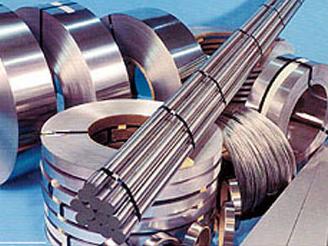Maintenance, repair, and operations (MRO) teams can especially attest that MRO processes are being increasingly upgraded and updated with new, specialized materials. As new construction methods take hold, new challenges are being introduced to mechanical, plumbing, or electrical device maintenance and replacement.

Superalloys are popular in MRO processes due to their mechanical strength, resistance to creep, surface stability, and corrosion and oxidation resistance. These qualities lead to improved performance and longer life with less maintenance and easier repair.
High performance nickel alloys are used in a diverse range of industries and processes. These include aircraft, automotive, chemical processing, electrical resistance heating, electronics, telecommunications, marine, and oil and gas extraction.
What makes nickel superalloys so attractive is their resistance to corrosion and oxidation. Varieties of high performance nickel alloys include Incoloy®, Hastelloy®, Inconel® and Monel®. Each of these alloys has certain properties which make them suited for MRO applications. In particular, each alloy has certain machining and welding properties that make them more efficient and resistant to corrosion and wear.
Incoloy®
Incoloy is a line of superalloys produced by the Special Metals Corporation, a group of companies that specialize in inventing, producing, and distributing high-performance nickel alloys for specialized engineering projects, which includes inconel and monel.
Incoloy is an age-hardenable nickel-iron-chromium alloy with trace amounts of molybdenum, copper, titanium, and aluminum. There are currently 22 grades of incoloy, and they are broadly used for range of applications including oil and gas well piping, chemical processing, heat exchangers, nuclear facilities, and caruburizing equipment.
Incoloy is best suited for corrosion resistance in wet environments like plumbing systems or pipelines. It can also maintain its austenitic structure through extended periods of exposure in high temperatures.
Incoloy is best worked in temperatures of 1600°F (850°C) to 2150°F (1175°C). For best results, it is recommended to rough machine the material before age hardening and finishing after heat treatment. Incoloy’s maximum corrosion resistance and strength is achieved after aging and hot-working the alloy in the 1600°F (870°C) to 1800°F (980°C). Cold-working certain grades of incoloy make it behave similarly to other grades, such as incoloy 925, which behaves like 825 when cold-formed except with a higher work-hardening rate.
The best methods for welding incoloy are either using gas-metal-arc welding (GMAW) or gas-tungsten-arc welding (GTAW). For the former method, it is not recommended to go above 180 amps of current in the “spray arc” metal transfer mode.
Hastelloy®
Hastelloy is a high-performance nickel alloy registered by Haynes International, Inc. The primary alloying ingredient in hastelloy is typically transition metal nickel, with various percentages of copper, iron, aluminum, and titanium. Common Grades of Hastelloy include C276 and C22. Hastelloy is especially resistant to high-temperature and high-stress envionrments, and is a great alternative to iron-based alloys in terms of corrosion resistance.
The welding characteristics of hastelloy are similar to austenitic stainless steel, and hence not very difficult to weld with proper care. The preferred method for welding hastelloy is GTAW, GMAW, and shielded metal arc welding (SMAW). Other less common welding methods are plasma arc welding, resistance spot welding, laser beam welding, electron beam welding and submerged arc welding.
One of the most important issues to keep in mind when welding hastelloy is cleanliness. Contamination from greases, oils, lead sulfur, and other elements with melting points lower than nickel can cause severe problems.
Inconel®
The primary alloying ingredient in inconel is nickel-chromium. It is resistant to oxidation and corrosion, especially to chloride-ion stress-corrosion cracking. This makes it well-suited for high heat and high pressure environments. There are currently 25 grades of inconel which are commonly used in chemical and food processing, furnace components, and aerospace and land-based gas turbine parts like jet engines.
When inconel is heated, it has a tendency to form a thick and stable passivating oxide layer that protects any surface from damage. Since inconel tends to quickly work harden, welders need to minimize the number pf passes with an aggressive but slow cut with a hard tool, especially when working with age-hardened grades like inconel 718. Other Commin Inconel alloys are Inconel 600, 601, 625, 825, and x-750.
Inconel also tends to crack and segregate at a microstructural level in the heat-affected zone, which adds to the difficulty of welding it. The recommended ways of overcoming this tendency is through GTAW and electron beam welding.
Monel®
Monel—as we’ve previously talked about—is particularly resistant to high-temperature. It is composed primarily of nickel and copper, with iron, carbon, manganese, and silicon included in various percentages. Monel is highly resistant to corrosion and stronger than pure nickel. Its resistance to hydrofluoric acid, sea water, alkalies, and sulfuric acid makes it ideal for marine and chemical environments.
Monel is relatively easier to machine and weld than inconel, incoloy, and hastelloy. It is generally recommended to use a cold-drawn, stress-relieved filler material to achieve the best machinability and smoothest finish. Monel can also be welded through a wide range of common methods, including GTAW, GMAW, and SMAW.
